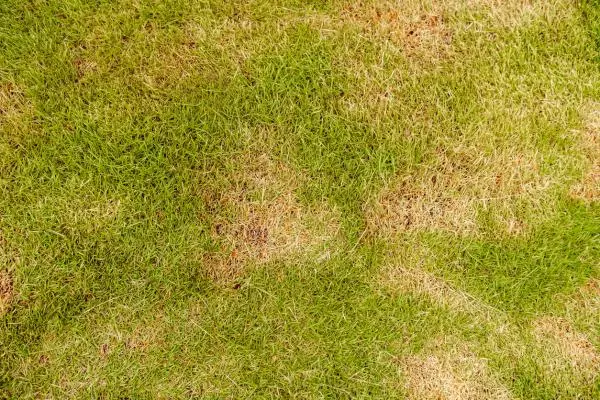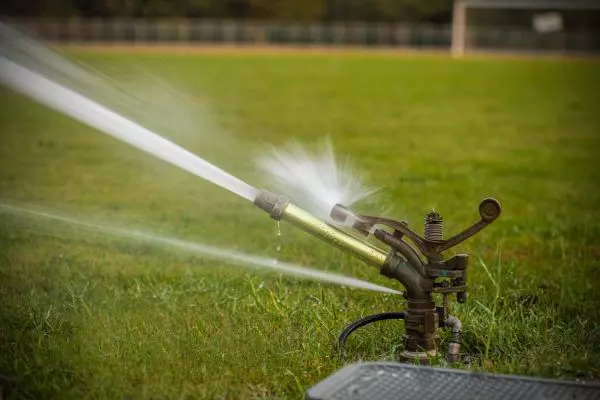Everyone who has a garden space with grass or is in charge of the care of a grassy area has more than once encountered yellow spots on the grass. This problem, which can have many causes, is one of the most common headaches for gardeners and gardening enthusiasts around the world, but fortunately, it always has a solution.
If you want to know why the grass has yellow spots and what is the most important grass care to improve it, join us in this article in which we clarify the causes of yellow spots on the grass.
Table of Contents
What Causes Yellow Grass Spots?
There are a large number of species and varieties of grass, each one is suitable for certain climates and conditions. If you live in a warm area and your lawn is exposed to direct sunlight, you will likely find yellow spots on the grass where the light is most intense, especially at midday.
Lawns are very stressed under intense sunlight and species or varieties that are not prepared for very warm environments are even more stressed. Pay close attention to the characteristics of your climate before planting the grass and try to match its needs to what you can provide.
Yellow Grass Due to Drought
Just as too much sun can weaken the grass and make it yellow, a lack of water will have much the same effect: dry, yellow, brittle grass. Again, each type of grass has very different watering needs, and these are greatly affected by soil drainage and the climate of the area.
Pay attention to how you water, trying not to leave areas without water and others waterlogged, and to the possible unevenness of the terrain, which can cause the water to concentrate at certain points.
Sick Grass Due to Overwatering
If it is possible to have yellow spots on the grass due to lack of watering, it is also possible for the opposite to happen. People without much experience with gardening tend to think that the more water a plant receives, the better for it, but those of us who have been gardening for a while know that too much water tends to be more dangerous than not enough.
When the soil becomes waterlogged or waterlogged, the roots lose the ability to breathe and tend to rot quickly. Without a root system to feed it, the aerial part of the plant is left without a food source and soon dies. In addition, excess moisture tends to favor the appearance of all kinds of fungi, especially in warm or hot temperatures, which will soon attack the grass and leave yellow areas.

Yellow Grass Due to Lack of Sunlight
If there are trees in the area where you have planted the grass, one of them may be casting too much shade on a certain area of the grass which, if it is deprived of light for many hours a day, may end up yellowing and drying out. It is even possible that the roots of the tree have spread superficially under the grass and are depriving it of water or nutrients.
Yellow Spots on The Grass Due to Nitrogen Excess
Nitrogen is one of the main plant nutrients, and also one of the elements in which almost all fertilizers are richest. However, while nitrogen is essential for vegetation growth, too much of it changes the pH of the soil and burns the roots.
If your grass has uniformly yellow spots, you are probably over-fertilizing, so you should reduce your fertilizer rate or look for a fertilizer that is less nitrogen-rich. Excess of the other elements is usually much less important, and it takes really large amounts to be a problem.
Another substance very rich in nitrogen is urine. If one or more dogs urinate frequently on a particular area of the grass, you will end up with the characteristic yellow patches bordered with green, where the outer area is rich enough in nitrogen to fertilize the grass, but in the center, the concentration is excessive and has burned the grass.
How To Recover Your Yellow Lawn
Once you’ve found the reason for your sick grass, do what you can to change that element that’s hurting it.
- If your grass is getting too much sun, watering it more often may help.
- It’s also possible that the soil has become too compacted over time: trampling and the accumulation of dead roots can make the soil impermeable, and scarifying is necessary to aerate the soil, usually in late summer and winter.
- You should also make sure that your grass is not under attack by fungi and, if so, you can treat it with an antifungal, always preferably homemade and organic, they are very easy to make.
We hope this guide on yellow spots on grass will be of great help to you. We recommend you see our complete guide on how to fertilize your lawn.


